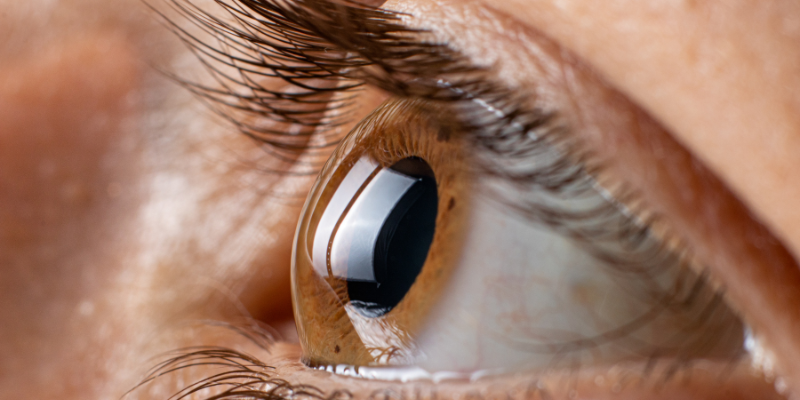Discover Partial Hemianopia: What, Why, and How
Nov 18, 2024 By Celia Shatzman
Partial hemianopia is one of the visual conditions that cause a person to lose visibility in one-half of the field of vision, horizontal or vertical. This sometimes makes everyday tasks difficult due to the lack of complete visibility on one side, for example, reading texts, walking straight, or recognizing faces. Partial hemianopia is a condition in which half of the visual field is unaffected. Instead, only a part of that field is concerned. This condition is caused by damage to specific brain areas rather than through direct damage to the eyes. Such damage can result from a stroke, traumatic injury, or even through certain neurological conditions affecting the visual pathways.
Types of Hemianopia
Affected parts of the visual field can be categorized to determine which part is affected to decide whether it is hemianopia or partial hemianopia, and each type has characteristic features. The most common type is homonymous hemianopia, which means the loss of vision on the same side of each eye. That means either the left side is lost or the right one. For example, for left homonymous hemianopia, the individual will not see what is on either eye's left side of the visual field.
- Bansal Hemianopia: In this case, vision loss occurs in the (nasal) areas of the visual fields of both eyes. Most of these conditions arise due to damage or disease to the optic nerves.
- Temporal hemianopia: This type affects both the outer areas of the visual field and the temporal areas. It is usually associated with optic chiasm compression, where optic nerves cross in the brain. This hemianopia is often due to pituitary gland tumors or other conditions that exert pressure on the optic nerve.

Causes of Partial Hemianopia
Partial hemianopia occurs when damage to the brain's visual processing pathways rather than any direct injury to the eyes themselves causes visual signals travelling from the eyes to the brain to be disrupted, leading to a partial loss of vision in specific areas. Here are the primary causes:
The leading cause of hemianopia is stroke because it can adversely affect the visual processing portions of the brain. However, the affected visual field depends on which part of the brain suffers from the stroke.
- Partial hemianopia may arise from traumatic brain injury involving areas of the brain connected with vision processing. Generally, TBIs result from accidents, falls, and other significant impacts on the head.
- Tumours of the Brain: Compression or growing against and near the optic pathways could also cause partial vision loss through compression or damage to visual pathways in the brain.
- Neurological Disorders: One of the diseases of multiple sclerosis is that it damages nerves and can damage the brain's tissue, which might affect the optic pathways and lead to partial hemianopia.
Symptoms of Partial Hemianopia
The symptoms of partial hemianopia vary depending on the area and degree of vision loss. Individuals experiencing this disorder may encounter numerous visual defects that adversely affect their lifestyles. It begins with gaps and blank blind spots within their field of vision. These blank areas or blinding sightlessness might miss part of what they might view before them, like persons sitting beside them.
- Lack of mobility: Spatial understanding is often compromised due to partial hemianopia, where the subjects become oblivious to objects that fall on one side.
- Mobility-compromised. Difficulty moving around safely may also be particularly troublesome during the night due to decreased vision of objects in the environment.
- Headaches, eye-straining complications, and Compensation for deficient visual field regions open the way for an enhanced and excessive use of the subject's eyes to fill those voids.
- Challenges: While Reading In this case, people suffering from partial hemianopia might even face difficulties in reading because a lost word on one half of the page can be easily overlooked, affecting how one can read lines well without losing the line being followed.

Diagnosis of Partial Hemianopia
A complete eye and vision exam best diagnoses partial hemianopia. There are several methods of identifying the exact areas involved in vision loss and other causes for such a defect. The most common ones include:
- Visual Field Testing: This test outlines the visual field to check for blind spots or reduced vision areas. A central point is focused, and lights flash in different areas of the visual field to determine where the patient cannot see well.
- Brain imaging: MRI or CT scans might reveal changes such as tumours, lesions, or structural changes due to stroke or injury.
- Eye examination: This is an investigation into the eyes' overall health, and it might involve various tests to detect other conditions contributing to vision problems.
Treatment and management choices
Partial hemianopia is often permanent because damage in the brain's visual pathways, at best, is not always reversible. But there are treatments and management that can be done to enhance the quality of life of a person suffering from this condition:
- Vision Therapy: This treatment includes specific exercises to enhance visual awareness in the impaired areas of the visual field. These exercises enable the brain to adapt and use the remaining vision better.
- Optical Aids: The optical aids include prisms, special lenses, and mirrors. These are used to expand the visual field. These aids may redirect light, allowing people to see more of their surroundings and improve their spatial awareness.
- Occupational Therapy A registered occupational therapist can educate the individual about adaptation and performance despite their new vision loss. This includes safe mobility around the home, personal care adaptations, and adaptation to other new ways of performing things.
- Medical Management: In some cases, partial hemianopia arises from conditions like tumour formation or brain swelling. Therapy targeting the cause, such as medication or surgery, could improve or fully return parts of vision.
Conclusion:
Having partial hemianopia can be very challenging as it dramatically reduces a person's field of vision, thus hampering their ability to walk and carry out daily activities. It may be found that in most cases, this condition is often due to any lesion affecting the brain, whether it is a stroke, head trauma, or even degenerative diseases of the central nervous system. However, effective management strategies exist. Be it vision rehabilitation, use of optical devices, occupational Therapy, or even modification of the environment, people affected can adopt measures that help them avoid losing out on life.

Understanding and Overcoming Anxious Thoughts: Practical Ways to Worry Less

On Silent Feet: Could You Be Suffering from Walking Pneumonia?

Eye-Opening Insights: Busting Myths Around the Tear Trough

Uncovering the Triggers Behind Sudden Urge to Urinate

Marvelous Menthol: Revealing Heroic Essence of Its Purifying Powers

Understanding the Worst Places to Keep Your Skincare Products

A Far-Reaching Guide to Calorie Deficit


